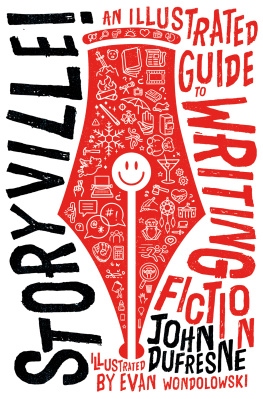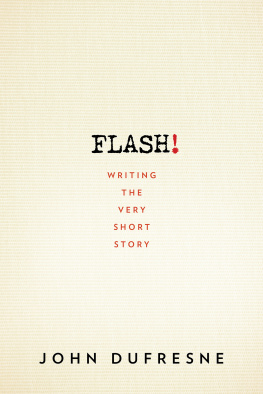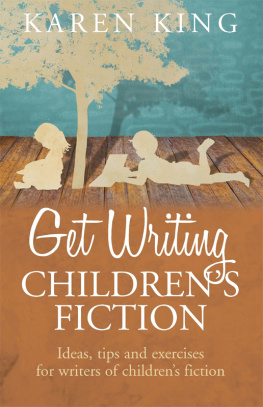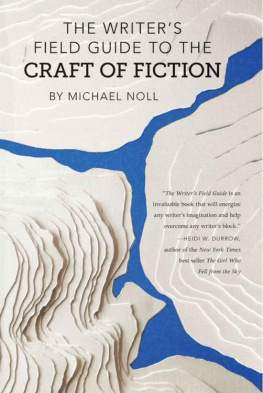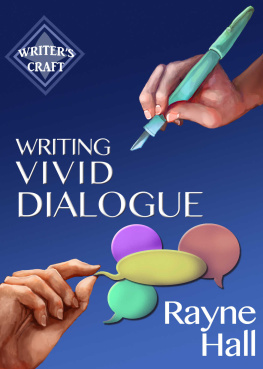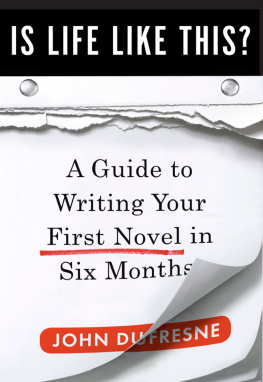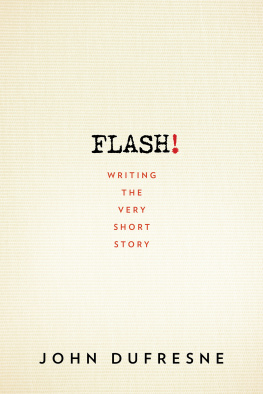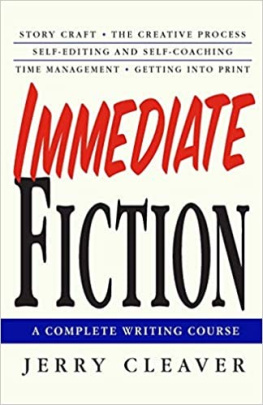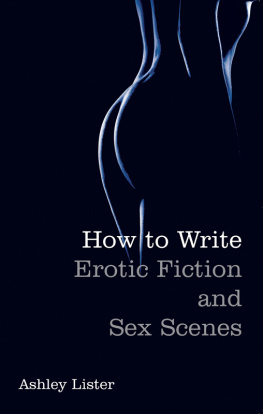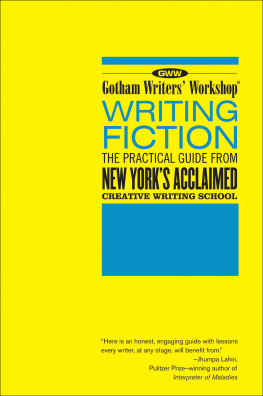Contents
Guide

Also by John Dufresne
FLASH!: Writing the Very Short Story
I Dont Like Where This Is Going
No Regrets, Coyote
Is Life Like This? A Guide to Writing Your Novel in Six Months
Requiem, Mass.
Johnny Too Bad
The Lie That Tells a Truth: A Guide to Writing Fiction
Deep in the Shade of Paradise
Love Warps the Mind a Little
Louisiana Power & Light
The Way That Water Enters Stone
Storyville!
An Illustrated Guide to Writing Fiction

John Dufresne
Illustrated by Evan Wondolowski

Copyright 2020 by John Dufresne and Evan Wondolowski
All rights reserved
First Edition
For information about permission to reproduce selections from this book, write to Permissions, W. W. Norton & Company, Inc., 500 Fifth Avenue, New York, NY 10110
For information about special discounts for bulk purchases, please contact W. W. Norton Special Sales at specialsales@wwnorton.com or 800-233-4830
Cover design by James Jones
Cover illustrations by Evan Wondolowski
Author photographs: (Dufresne) Garry L. Kravit;
(Wondolowski) Melody Martin
Production manager: Beth Steidle
Library of Congress Cataloging-in-Publication Data is available
ISBN 978-0-393-60840-3
ISBN 978-0-393-60841-0 (eBook)
W. W. Norton & Company, Inc., 500 Fifth Avenue, New York, N.Y. 10110
www.wwnorton.com
W. W. Norton & Company Ltd., 15 Carlisle Street, London W1D 3BS
For all my students over the years who have helped me to understand what a story can be, for my brilliant colleagues in the Creative Writing Program at Florida International University, and as always, for Cindy.
John
For Mom, who always encouraged me to follow my passion.
Evan
What thou seest, write in a book...
Acknowledgments
We want to thank Jill Bialosky, who, as always, helped make this a better book than it would have been. And thanks to our agent Bill Clegg for his efforts on behalf of Storyville. To Drew Weitman, our extraordinary assistant editor, and to Dave Cole, friend and copy editor. And to all the writers in our Movable Writing Feast: Teddy and Jim Bob Jones, Kim Bradley, Cully and Susan Perlman, Karen and Garry Kravit, Jill Coupe, Scott and Sandy Jones, Peter Stravlo and Peggy McGivern, David and Rosie Norman, Liz Trupin-Pulli, Jean Dowdy, Kim Bradley, Jim Herod, Maureen Welch and Sherry Dickerson, Jose Sary, Bruce Harvey, Connie St. Clair, Melanie Mochan, Stephanie Josie, Frances Nevill, Joy Dickinson, Sally Bowditch, Gail Randall, Karin Cadora, Liz Ferrer, John Green, Robert Miller, Jeff Williams, Sandi Hutcheson, Helena Rho, Cheryl Romo, Joan Baker, Margaret Mooney, Susan Lolis, Chervis Isom, Annelle Gordon, Jim Cowart, Charlyn Rainville, Mike Oldham, Karen Herzog, Nancy Palmer, Michael Sheriff, Mo Donnelly, Kelly Canaday, Susan Brandt, Dwan Tape, to all the folks at Sundog Books in Seaside and Books & Books in Miami, to the Friday Night Writers, and to Johns office mate and BFF, Theodore Harrison-Rowan, who sat down one morning and wrote this poem:
park
I went to the park with my friend Lola. We played for a long time. I was Lolas friend since I was three when I met Lola; now Lola is eight and I am always a year younger than Lola. Now I am seven years old.
GROUPS
We played in groups. Lola went with just girls I went with just boys; we played soccer, tennis, and hide in seek. The girls were the ages between eightten years old, and mine were teens.
AT HOME
Lastly, we played in my room or the house. We were still friends. We had a few snacks (two is a few); we ate chetoes and fruit roll-ups THE END
Storyville!

The Fiction Writer
A writer never has a vacation. For a writer, life consists of either writing or thinking about writing.
Eugene Ionesco

Introduction
You need at least two skills to be a fiction writer. You have to be able to write and you have to be able to tell a story. Telling a story is the harder skill to master.
My dear friend Charlie Willig was the most fascinating storyteller I ever met. And he was full of stories. He could keep you engrossed all day long. He could tell you about laying a pipeline in Oklahoma and keep you riveted to your chair and laughing to beat the band. He knew stories about everyone we worked with, everyone in Augusta, Georgia, it seemed. Id say, Charlie, you need to write these down. But he never did. Turns out I was wrong. He didnt need to write them down. He just needed to tell them. He liked the intimacy and the immediacy of the auditors response, which is something writers have to do without. He liked an audience. The audience, often an audience of one, brought out the scamp in Charlie. I wanted him to come on by every morning to the rent house he found for us, and tell me a story or twogive me something to spend the day writing about. And he knew how to tell a story. He did not rush. He painted pictures. I couldnt figure out how so many interesting and funny things were happening to Charlie. Years later I read something that Allan Gurganis wrote about stories: Know something, sugar? Stories only happen to the people who can tell them. That was Charlies secret.
When I remember Charlies storytelling skills I am reminded of Chekhovs sledge driver Iona Potapov in the story Misery, who needs to tell the story of his dead son: His son will soon have been dead a week, and he has not really talked to anybody yet.... He wants to talk of it properly, with deliberation.... He wants to tell how his son was taken ill, how he suffered, what he said before he died, how he died.... He wants to describe the funeral, and how he went to the hospital to get his sons clothes. He still has his daughter Anisya in the country.... And he wants to talk about her too.... Yes, he has plenty to talk about now. His listener ought to sigh and exclaim and lament....

To whom shall I tell my grief?
We read stories and write them to make sense of our lives, to be entertained, and to feel something. We read and write and tell them to be transported to another, more lucid and compelling world, to learn about ourselves and about what its like to be a human being. This narrative impulse is as basic as breathing. Children understand stories before they understand math or anything else. They want stories, and as soon as they can speak, they tell stories. We are

